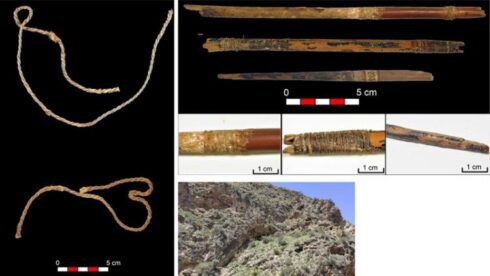THIS historic witch town in Granada is sure to put you under a spell with its charm and never-ending photo opportunities.
The windy roads lined with thin pines become overcast with a blanket of grey clouds as I near Soportujar.
Known as the Alpujarran ‘witch town’, the mystical atmosphere is palpable from the outset.
The residents or ‘witches’ of Soportujar got their name in the 16th century, when the expulsion of the Moors brought newcomers from northern Spain.

They brought with them their pagan traditions rousing suspicion amongst local people.
Although it is not known if this tale is 100% accurate, it is true that various women were investigated for witchcraft in the area.
Other stories state that the nickname comes from local people’s treats and cosmetics, cooked up using herbs and spices.
Either way, since the first Witch Fair in 2009, the town has embraced the mystery, using it as a way to enthrall tourists like me.
After turning past the suitably witchy bus stop at the entrance to the town, there is plenty of free parking along the sides of the road.
For most convenience, park near the Cueva del Ojo de la Bruja, the first stop on your tour of the town.
Legend has it that an old sorcerer once lived in the depths of the cave, concocting potions.
Inside, there are hundreds of little details giving you a sense of how the witches may have lived.

Next door, don’t forget to snap a picture with the statue of a stereotypical haggard old woman before carrying on into town.
After following the road for a while, you will come to a huge, grotesque statue of an old woman’s head filled with warts, piercing eyes and horns- you’ve found Baba Yaga (or should I say, she’s found you).

Take a picture of the town map and the sculpture before venturing over the road to the Witchcraft Museum.
Pay the €3 entry and as soon as you step inside, a shiver will run down your spine.
Spiders dangle from the roof, hooded figures linger in the corners and chilling music plays from the speakers.

Meant for children, the museum gives a simple overview of the global history of witchcraft and its symbolism, with a few explanations of local lore.
Overall, the museum was fun and a great stage setter for the rest of the town.
While I can’t say I learnt much, it was very atmospheric and put me straight into a Halloween mood.

After that, I continued into the centre, where there are neverending opportunities to buy, take pictures of and enjoy witchy regalia.

Throughout the streets of an otherwise typical whitewashed Andalucian town, there are fantastical installations to delight kids and adults alike.

Though I enjoyed the broomstick photo opportunity, the snake slithering through picturesque porticoes and Baba Yaga’s house mounted atop chicken legs, my favourite was definitely Hansel and Gretel’s cottage.

Amongst the bleached white of the town, the rainbow dwelling covered in sweets immediately caught my eye.

Other landmarks include the Witch’s Fountain and the cauldron statue at the Mirador del Embrujo.
Even the bars and restaurants have toiled and troubled over their menus, adding bewitching touches to every dish.
Soportujar is well worth visiting, especially if you have young children or want to let out the child within.
Don’t miss some other nearby towns that are equally as enchanting such as Pampaneira or Trevelez.










